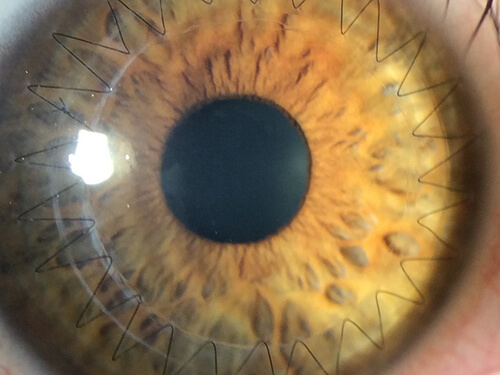Cornea / External Diseases
Treatment of Corneal External Diseases
Discover Vision’s Dr. John Doane and Dr. Stephen Stechschulte specialize in treatment of cornea external diseases. The cornea is the clear, outer surface of your eye responsible for focusing power. If a cornea is damaged, the light that enters the eye is distorted causing the image you see to be blurry. A cornea may become damaged in several ways, including injury, disease, infection or previous eye surgery. Sometimes damage to the cornea is mild enough that it may be repaired to restore vision. If not, a corneal transplant may be necessary.
What Is a Corneal Transplant?
A corneal transplant often becomes necessary when a particular organ / tissue becomes damaged beyond repair. The damaged area is replaced with healthy donor organ / tissue. Corneal transplantation is the most successful transplant procedure performed worldwide. This is largely due to the fact that corneal tissue does not have to be “matched” between donor and recipient. In other words, a healthy cornea may be donated to any individual with good chances for success. Donor tissue is stored and ordered from an Eye Bank. Vision can be greatly improved if the procedure is successful and healing occurs without problems.
DSEK: Advanced Transplant Technique
Patients with cloudy corneas may be treated with an exciting new transplant technique known as Descemet’s Stripping with Endothelial Keratoplasty (DSEK). This technique allows the cornea to heal much faster, compared to traditional full thickness transplants, because DSEK requires no stitches. Only the damaged inner layer of the cornea is replaced, resulting in rapid visual recovery. Candidates for DSEK include people with Fuch’s Dystrophy and Pseudophakic Bullous Keratopathy.
What should I expect during a transplant procedure?
A corneal transplant procedure typically takes between 30 minutes to 2 hours. Pre-operatively you will be given sedatives and a local anesthetic. During the procedure, you will be awake, but comfortable. Your surgeon will use a high-powered microscope throughout the procedure. The damaged portion of your cornea will be removed and replaced, using very thin nylon thread. These stitches may be slightly visible to others, but they should not be painful or interfere with your vision.
For more information call 816.478.1230 today or click here to schedule an appointment.
Cornea / External Diseases Doctors



